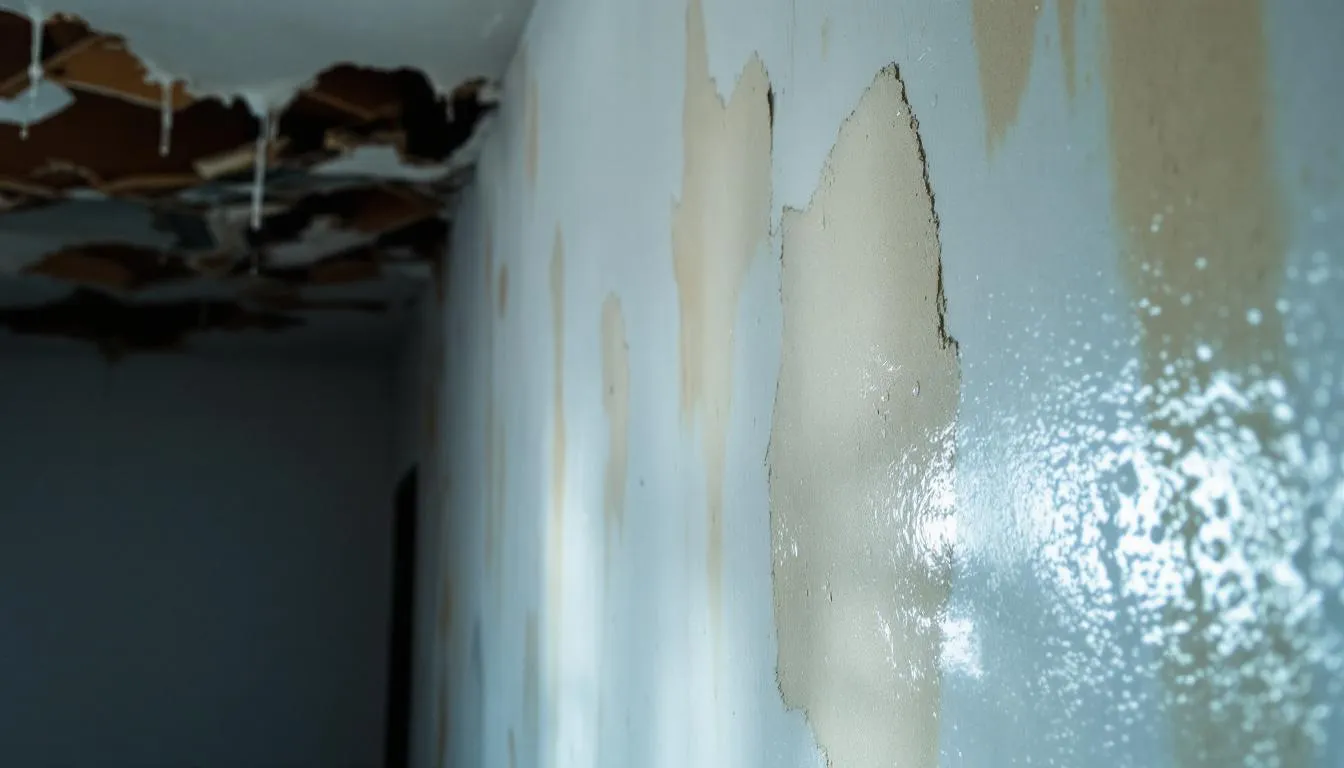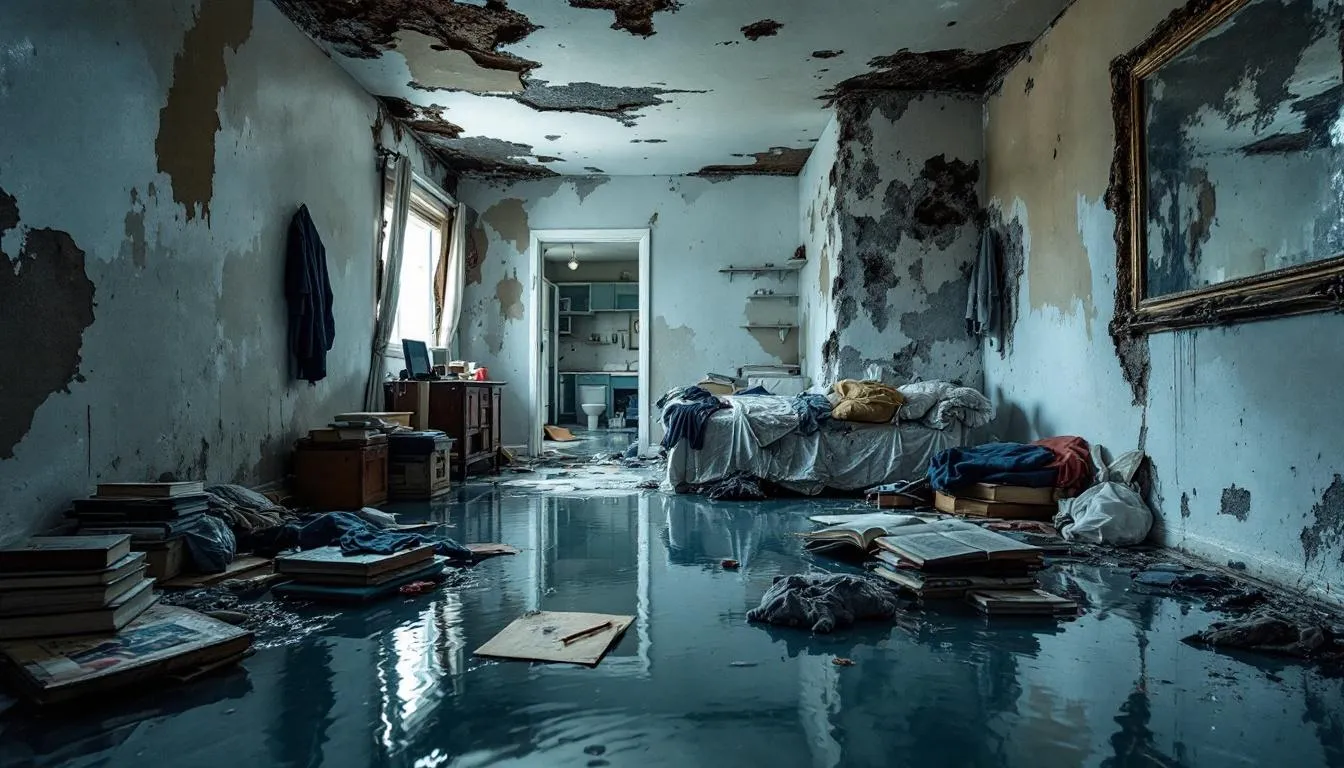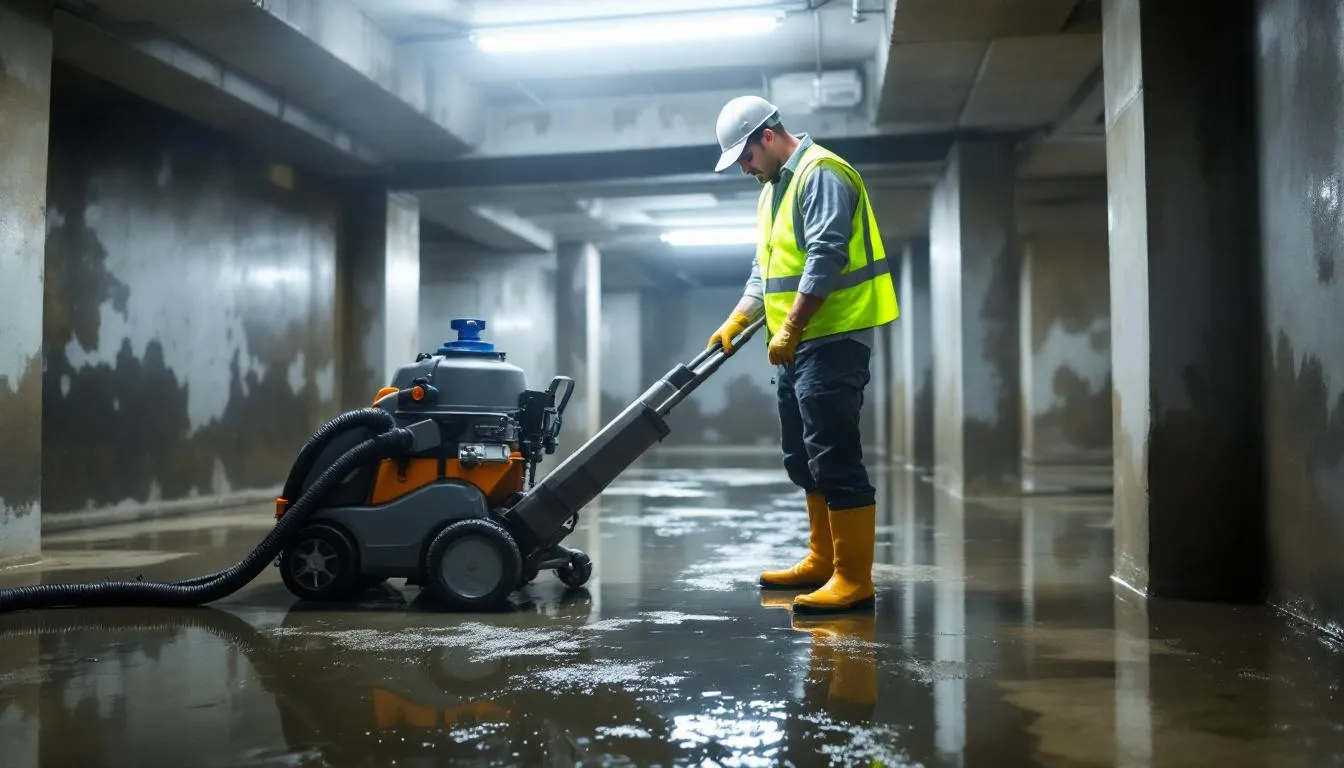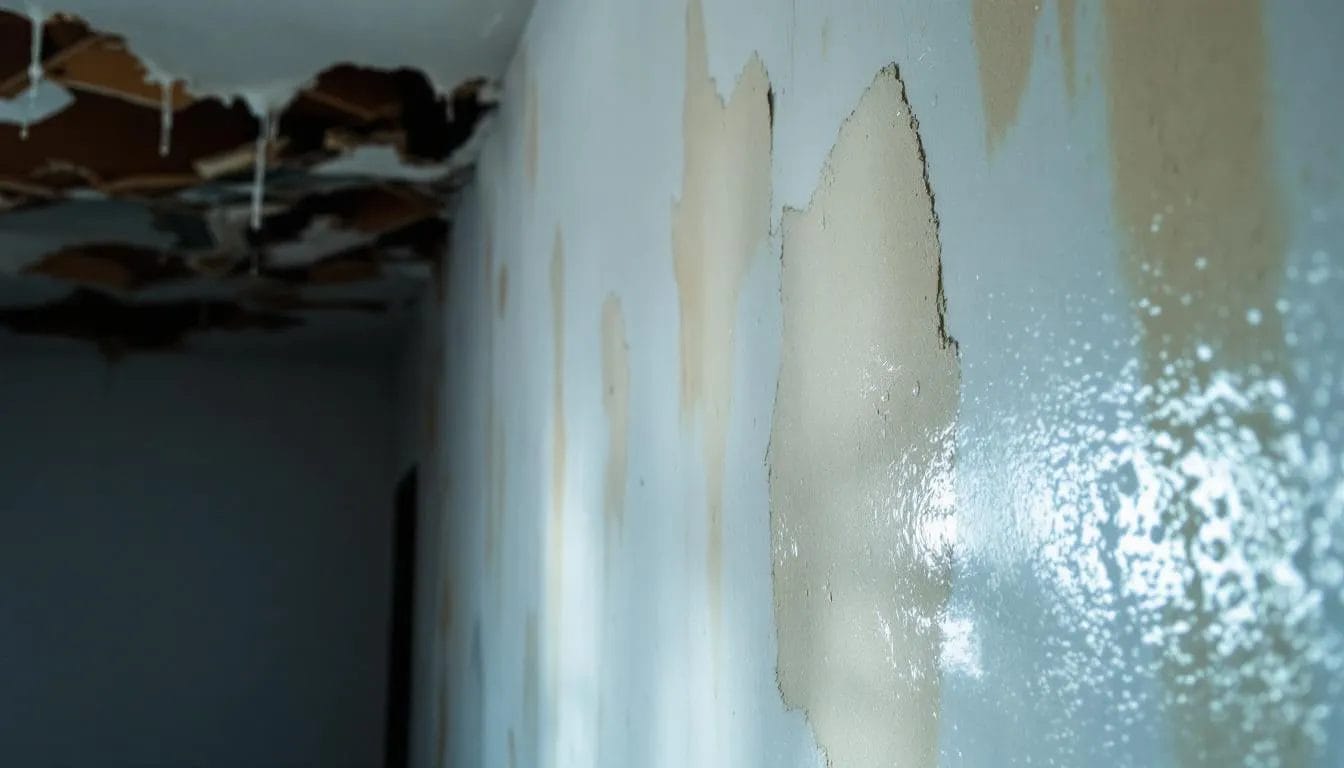Water damage strikes when you least expect it, turning your home into a stressful battlefield of soggy belongings and urgent decisions. Whether it’s burst pipes flooding your basement or storm water seeping through your roof, the aftermath involves more than just cleanup—it means navigating the complex world of insurance claims and dealing with insurance adjusters who may not have your best interests at heart.
The harsh reality is that insurance adjusters work for the insurance company, not for you. Their primary goal is to minimize claim payouts while fulfilling contractual obligations. This creates an inherently adversarial situation where knowledge becomes your most powerful weapon. Understanding the claims process, your policy coverage, and effective negotiation strategies can mean the difference between a settlement that barely covers emergency repairs and fair compensation that fully restores your property.
In this comprehensive guide, you’ll learn proven strategies for dealing with insurance adjusters after water damage, from the critical first 48 hours through final settlement negotiations. We’ll reveal common adjuster tactics, show you how to document damage effectively, and explain when professional help becomes essential for protecting your claim.
Key Takeaways
Before diving into the details, here are the most critical points every property owner should understand:
- Contact your insurance company within 24-48 hours of discovering water damage to begin the claims process and avoid potential coverage disputes
- Document all water damage thoroughly with photos, videos, and written records before any cleanup begins—this evidence becomes crucial for claim validation
- Insurance adjusters work for the insurance company, not you—their goal is to minimize claim payouts while meeting basic policy requirements
- Understand the difference between covered water damage (burst pipes, appliance malfunctions) and excluded damage (flooding from external sources, gradual leaks)
- Consider hiring a public adjuster for complex claims or if you receive a lowball settlement offer—they typically increase settlements by 20-30%
- Keep detailed records of all communications, expenses, and temporary repairs throughout the entire process
Table of Contents
Understanding Water Damage Coverage and Policy Limits

The foundation of successful insurance claims starts with understanding exactly what your homeowners insurance policy covers—and more importantly, what it excludes. Insurance policies typically distinguish between “sudden and accidental” water damage and damage from excluded causes, creating gray areas that adjusters often exploit.
Covered Water Damage vs. Exclusions
Most homeowners insurance policies provide coverage for sudden water damage caused by:
- Burst pipes and plumbing failures
- Appliance malfunctions (washing machines, water heaters, dishwashers)
- Storm damage where water enters through storm-damaged roofs or windows
- Accidental overflows from bathtubs, sinks, or toilets
However, these same policies typically exclude:
- Flood damage from external water sources (rivers, storm surge, surface water)
- Gradual leaks that develop over time due to poor maintenance
- Sewer backups (unless specifically covered by endorsement)
- Damage from negligence or failure to maintain the property
The distinction between covered “sudden” water damage and excluded “gradual” damage becomes a frequent battleground with adjusters. They may argue that visible water stains or previous moisture indicate a long-term problem, potentially voiding your claim.
Flood Insurance Requirements

A critical gap in many homeowners’ protection is flood insurance. Standard homeowners insurance does not cover flood damage, which requires a separate flood insurance policy through the National Flood Insurance Program (NFIP). This separate policy comes with a 30-day waiting period before coverage becomes active, making advance planning essential.
Industry research reveals that only about 15% of U.S. homeowners carry flood insurance, leaving millions exposed to potentially devastating losses. If external water sources cause your damage, you’ll need this separate flood insurance policy for coverage.
Know Your Policy Limits and Deductibles
Review your insurance policy’s declarations page to understand:
- Coverage limits for dwelling, personal belongings, and additional living expenses
- Deductible amounts you’ll pay out-of-pocket before coverage begins
- Sub-limits for specific categories like mold remediation or electronics
- Replacement cost vs. actual cash value coverage for damaged items
Understanding these details before disaster strikes helps set realistic expectations and prevents surprise gaps in coverage during the claims process.
Immediate Steps After Water Damage Discovery
The first 48 hours after discovering water damage are critical for both protecting your property and preserving your insurance claim. Every action you take—or fail to take—during this period can significantly impact your settlement outcome.
Stop the Source and Mitigate Further Damage
Your first priority is preventing additional water damage:
- Shut off the water source immediately if possible—turn off the main water valve for burst pipes or appliance shutoffs for equipment failures
- Ensure electrical safety by turning off power to affected areas if standing water is present
- Remove standing water using pumps, wet vacuums, or professional water extraction services
- Place tarps or plastic sheeting over roof openings or broken windows to prevent additional water intrusion
Insurance policies include a “duty to mitigate” clause requiring you to take reasonable steps to prevent further damage. Failure to mitigate can result in claim denials for subsequent damage that could have been prevented.
Report the Loss Immediately
Contact your insurance company or insurance agent within 24-48 hours of discovery. When you call:
- Provide your policy number and basic damage details
- Request a claim number for future reference
- Ask about your policy’s specific reporting requirements and deadlines
- Inquire about preferred emergency service providers if immediate mitigation is needed
Most insurance companies have 24-hour claim reporting hotlines, and many states require insurers to acknowledge claims within 15 days of receipt.
Document Everything Before Cleanup
Critical: Take comprehensive documentation before any cleanup or temporary repairs begin. This evidence becomes essential when dealing with insurance adjusters who may question the extent or cause of damage.
Create a thorough record including:
- Photos from multiple angles showing water sources, affected areas, and damaged items
- Video walkthroughs with narration explaining what happened and your concerns
- Written inventory of damaged personal belongings with estimated values and purchase dates
- Receipts for emergency services, hotel stays, and immediate repair costs
Save All Receipts
Keep detailed records of every expense related to the water damage:
- Emergency water extraction and drying services
- Temporary accommodations (hotels, rental housing)
- Emergency repairs to prevent further damage
- Professional assessments and inspections
- Storage fees for salvaged belongings
These costs are often reimbursable under your policy’s additional living expenses coverage, but only with proper documentation.
Working Effectively with Insurance Adjusters
Understanding how insurance adjusters operate is crucial for protecting your interests during the claims process. Remember that company adjusters represent the insurance company’s interests, not yours, and their assessments directly impact your settlement amount.
The Adjuster’s Role and Limitations
Insurance adjusters conduct detailed property inspections using specialized tools like moisture meters and thermal imaging to detect hidden damage. However, their evaluation is limited by several factors:
- Time constraints that may rush the inspection process
- Software limitations in pricing tools that may not reflect current local costs
- Company guidelines that incentivize lower settlements
- Initial information available at the time of inspection
This is why your documentation and advocacy become essential for accurate damage assessment.
During the Adjuster’s Inspection

Be present during the inspection and take an active role:
- Point out all areas of concern, including potential hidden damage behind walls or under flooring
- Provide your comprehensive documentation including photos, videos, and written records
- Ask questions about any items the adjuster excludes from their assessment
- Take notes on the adjuster’s observations and any statements they make
- Avoid admitting fault or speculating about the cause of damage
Request that the adjuster document their findings in writing and provide you with a copy of their damage assessment.
Maintaining Communication Records
Keep a detailed log of all interactions with your insurance company:
- Phone calls with dates, times, and discussion summaries
- Email correspondence and written communications
- Claim numbers and adjuster contact information
- Inspection dates and findings
- Settlement offers and negotiation details
This documentation protects you if disputes arise later in the process.
Common Adjuster Tactics to Watch For
Be aware of these common strategies insurance adjusters use to minimize claim payouts:
Quick Settlement Offers: Adjusters may present initial offers before the full scope of damage is apparent, hoping to close claims quickly with minimal payouts. Never accept the first offer without thorough evaluation.
Outdated Pricing Software: Claims software like Xactimate may not reflect current local labor and material costs, especially after major storms when demand spikes drive up prices.
Hidden Damage Oversight: Adjusters may focus only on visible damage, overlooking issues behind walls, under flooring, or in crawl spaces that require specialized detection.
Pressure Tactics: Some adjusters pressure claimants to sign releases or accept settlements before repairs are completed, eliminating the possibility of additional compensation if more damage is discovered.
Scope Reduction: Adjusters may attempt to limit the scope of covered damage by arguing that some issues existed before the water damage event or resulted from excluded causes.
Comprehensive Documentation Strategies
Thorough documentation serves as your strongest defense against lowball settlement offers and claim disputes. The quality and completeness of your evidence directly impacts your negotiating power with adjusters.
Essential Documentation Checklist
Visual Evidence:
- Before and after photos of all affected rooms and belongings
- Multiple angles showing the progression of water damage over time
- Close-up shots of damaged materials, stains, and structural issues
- Wide shots establishing the overall scope of damage
Video Documentation:
- Walkthrough videos narrating visible damage and your concerns
- Documentation of water sources and flow patterns
- Evidence of mitigation efforts and emergency repairs
Written Records:
- Detailed inventory of damaged personal property with values
- Timeline of events leading to the damage discovery
- List of immediate actions taken to prevent further damage
- Professional assessments from water damage restoration companies
Professional Documentation:
- Receipts for emergency services and temporary housing
- Written estimates from licensed contractors for structural repairs
- Moisture readings and air quality assessments
- Medical records if mold exposure or health problems develop
Documenting Hidden Damage
Water damage often extends beyond visible areas, making comprehensive detection crucial:
- Moisture mapping to identify water migration patterns
- Thermal imaging to detect temperature variations indicating hidden moisture
- Air quality testing for mold spores and other contaminants
- Structural assessments for foundation, framing, or electrical damage
Professional restoration companies can provide detailed moisture reports that strengthen your claim documentation.
Maintaining Organized Records
Create a systematic filing system for all claim-related documents:
- Digital copies of all photos, videos, and documents stored in cloud backup
- Physical files organized by category (correspondence, receipts, estimates)
- Chronological logs tracking the progression of damage and repair efforts
- Contact information for all professionals involved in assessment and repairs
This organization proves invaluable during settlement negotiations and if disputes require resolution through legal action.
When to Consider Hiring a Public Adjuster
While not every water damage claim requires professional representation, certain situations strongly favor hiring a public adjuster to advocate for your interests against the insurance company.
Understanding Public Adjuster Benefits
Public adjusters are licensed professionals who work exclusively for policyholders, not insurance companies. Their expertise includes:
- Policy interpretation and coverage analysis
- Damage assessment using industry-standard techniques
- Claims preparation and submission
- Negotiation with insurance company adjusters
- Settlement maximization strategies
Industry studies show that public adjusters typically increase average settlement amounts by 20-30%, often more than offsetting their contingency fees.
When Professional Help Becomes Essential

Consider hiring a public adjuster when:
Extensive Damage: Multiple rooms, floors, or significant structural damage require specialized assessment and documentation.
Low Settlement Offers: The insurance company’s initial offer seems significantly lower than actual repair costs based on contractor estimates.
Hidden Damage Discovery: Additional damage is found after the initial adjuster inspection, requiring claim supplementation.
Claim Complexity: Technical issues involving coverage interpretation, causation disputes, or policy exclusions.
Overwhelming Process: The claims process becomes too complex or time-consuming for you to manage effectively.
Claim Denial: Your claim is denied or the adjuster disputes coverage for reasons you believe are incorrect.
Public Adjuster Fee Structure
Most public adjusters work on contingency fee arrangements:
- Typical fees: 10-20% of the final settlement amount
- No upfront costs: Fees are only paid when settlements are received
- Performance incentive: Higher settlements benefit both you and the adjuster
Before hiring, verify the adjuster’s licensing, experience with similar claims, and references from previous clients.
Negotiating Fair Settlement Amounts
Successful settlement negotiation requires preparation, documentation, and understanding of the insurance company’s evaluation process. Remember that initial offers are rarely final, and most adjusters expect negotiation.
Building Your Negotiation Foundation
Multiple Contractor Estimates: Obtain written estimates from at least three licensed contractors to establish fair repair costs. Ensure estimates include:
- Detailed material and labor breakdowns
- Code upgrade requirements for older homes
- Timeline for completion
- Warranty information
Market Rate Documentation: Research current local pricing for materials and labor, especially if your area has experienced recent storms or high demand for restoration services.
Comparable Claims: If possible, research similar claims in your area to understand typical settlement ranges for comparable damage.
Challenging Low Offers
When disputing settlement amounts:
Request Detailed Breakdowns: Ask for line-item explanations of the adjuster’s damage assessment and repair cost calculations.
Identify Discrepancies: Compare the adjuster’s estimates with your contractor estimates, highlighting significant differences.
Provide Updated Documentation: Submit any additional damage evidence or professional assessments that support higher valuations.
Address Hidden Damage: Advocate for coverage of issues not visible during the initial inspection but discovered during repairs.
Specialty Consultations
Consider hiring specialized consultants for complex issues:
- Structural engineers for foundation or framing concerns
- Mold remediation specialists for contamination issues
- Electrical contractors for safety and code compliance
- HVAC professionals for system damage assessment
Expert reports from licensed professionals carry significant weight in settlement negotiations.
Settlement Pitfalls to Avoid
Partial Payment Acceptance: Understand whether partial payments represent final settlements or advances against larger claims.
Premature Release Signing: Never sign final releases before all repairs are completed and tested for effectiveness.
Code Upgrade Oversights: Ensure repair estimates include mandatory building code upgrades required for older homes.
Additional Living Expense Gaps: Don’t overlook reimbursement for extended hotel stays, meals, and transportation during repairs.
Supplemental Claim Rights: Understand your rights to reopen claims for additional damage discovered within the policy timeframe, typically 1-2 years.
Managing the Claims Timeline and Process
Understanding the typical claims timeline helps you maintain appropriate pressure on your insurance company while avoiding unrealistic expectations about resolution speed.
Standard Timeline Expectations
Initial Response: Most states require insurance companies to acknowledge claims within 15 days of receipt.
Investigation Period: Insurance companies typically have 30-60 days to complete investigations and make coverage decisions, though complex claims may take longer.
Settlement Negotiation: This phase varies widely based on damage complexity and disagreements between parties.
Payment Processing: Final payments usually occur within 30 days of reaching settlement agreements.
Monitoring Progress and Deadlines
Regular Updates: Request weekly status updates if your claim exceeds normal processing timeframes.
State Regulations: Familiarize yourself with your state’s unfair claims practices regulations and complaint procedures.
Documentation: Maintain records of all delays and their stated reasons for potential regulatory complaints.
Escalation Procedures: Know how to escalate issues within the insurance company hierarchy and when to involve state regulators.
Managing Restoration During Claims
Temporary Repairs: Complete necessary temporary repairs to prevent further damage while maintaining documentation for reimbursement.
Contractor Coordination: Work with restoration companies experienced in insurance claims who understand documentation requirements.
Progress Monitoring: Ensure proper air circulation and drying processes continue throughout the claims timeline.
Quality Control: Don’t rush repairs before settlement agreements are finalized, as poor work may limit future compensation.
Frequently Asked Questions
How long do I have to file a water damage claim?
Most insurance policies require reporting water damage within 30-60 days of discovery, but immediate reporting is always best. Early reporting prevents arguments about late notification and demonstrates your commitment to mitigating further damage.
What should I not say to an insurance adjuster?
Avoid admitting fault, speculating about damage causes, or agreeing that damage is minor without professional assessment. Stick to factual observations and let qualified professionals determine causation and extent.
Will filing a water damage claim raise my insurance rates?
Insurance companies may increase premiums by an average of 7-10% after water damage claims, but this varies significantly by company, claim size, and your claims history. Rate increases shouldn’t prevent you from filing legitimate claims.
Can I choose my own contractors for repairs?
Yes, you have the right to select your preferred restoration companies and contractors. Insurance companies may provide preferred vendor lists, but you’re not required to use their recommendations.
What if I discover more damage after settling my claim?
Most insurance policies allow claims to be reopened for supplemental damage discovered within a reasonable timeframe, typically 1-2 years. However, you must demonstrate that the additional damage resulted from the original covered event.
Is emergency water extraction covered by insurance?
Yes, most policies cover emergency mitigation costs, including water extraction and temporary repairs, provided these actions are taken to prevent further damage. Keep all receipts for reimbursement.
How do I know if my water damage is from flooding or a covered cause?
The source and direction of water flow typically determines coverage. Water entering from outside your home (surface flooding, storm surge) usually requires separate flood insurance. Water from internal sources (burst pipes, appliance failures) is typically covered under homeowners insurance.
Should I start repairs before my claim is settled?
Complete necessary emergency repairs to prevent further damage, but avoid major reconstruction until settlement agreements are finalized. Emergency repairs are usually covered, but permanent work done before settlement may complicate final compensation.
Conclusion
Dealing with insurance adjusters after water damage doesn’t have to be an overwhelming experience when you’re properly prepared. The key to success lies in understanding that insurance companies and their adjusters operate from a business perspective focused on minimizing payouts, not maximizing your compensation.
Your most powerful tools are thorough documentation, knowledge of your policy coverage, and persistence in advocating for fair treatment. Remember that initial settlement offers are starting points for negotiation, not final determinations of your claim’s value.
Whether you handle the process yourself or hire a public adjuster, the foundation remains the same: comprehensive damage documentation, understanding of your rights as a policyholder, and maintaining detailed records throughout the entire claims process.
Don’t let the complexity of insurance claims prevent you from seeking the fair compensation you deserve. When sudden water damage occurs, take immediate action to protect your property, document everything thoroughly, and remember that you have rights as a policyholder that are worth defending.
Your home is likely your largest investment—treat the insurance claims process with the seriousness and preparation it deserves to ensure the best possible outcome for your recovery.


